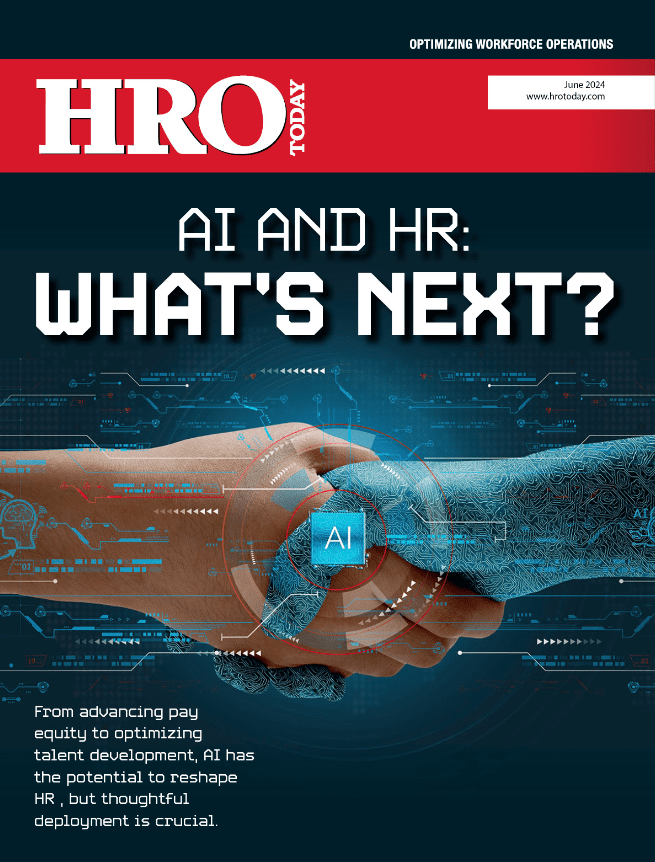HR leaders are overhauling their outdated systems for more efficiency, but they should steer clear of overcomplicating their processes.
By Simon Kent
The turn of the year is traditionally a time to rethink and renew. A time to evaluate what works and what needs attention. For HR, this could mean finally addressing that cumbersome technology system that, whilst chugging along in the background, could be holding back the business.
“Historically companies are loathe to rip and replace enterprise systems like HR and payroll as the risks are significant whilst the effort is enormous,” says Marcus Mossberger, head of marketing for service industries, with responsibility for the HCM stream, for Infor. “Over the years this has led to piecemeal strategies where organisations bolt together best-of-breed solutions and then rely on their over-burdened IT department to integrate them.”
Mossberger adds that the task of upkeep has become more complex as some systems have moved into the cloud, leaving IT with the headache of looking after those technologies whilst also keeping an eye on the kit that has stayed on site.
The impact of the pandemic and the shift to remote work has proven to be the tipping point for some employers to reassess their tech platforms. “In the face of the challenges brought forward by the pandemic, organisations were able to move mountains to ensure their employees were able to work from home,” says Charles Butterworth, managing director of Access People. “This proves that we can do anything that we set out to achieve if we have the right tools in place. Starting over isn’t always easy, but there are new technologies that can support modern ways of working that can be implemented quickly and effectively.”
Alexa Grellet, co-founder and commercial director of HR DataHub, says many organisations have either just undertaken a big HR digital transformation project or are planning one. “Often the breaking point is when the HR professional loses significant time on reporting,” she explains. “The more inefficient they are, the more eyes turn to the system in place that is frankly limiting their ability to do their tasks properly.”
However, Grellet also says technology change is carried out to realise new functionality. A regular request from HR professionals is for flexibility in their HRIS so they can access diversity and inclusion data as an example. “Their systems often cannot accommodate for the variety of characteristics of our workplaces today,” Grellet notes.
According to Karen Jackson, HR director for Reed, the main argument for changing HR software is that a new system can automate simple, repetitive processes and thereby free up time for HR teams. However, she warns that new implementations will not deliver instant benefits, as it takes time to learn the system and maximise efficiencies.
The complexity of moving people data between old and new systems depends on how good that data was in the first place. In an ideal world, perhaps, both old and new systems would use the same data fields, resulting in a straight swap. But do organisations need to retain all of the same historical data? Is it duplicated? Is it still pertinent to record a certain HR event, pay increase or benefit change from years back, or to retain details on employees who have long since left the company?
“Moving to a new system gives you the opportunity to review your policies and procedures, to ensure they are future fit and then you can build the HR system around the revised policy and processes,” advises Jackson. “This may include adding new fields, renaming old fields. You may have a field for annual appraisal performance rating which may now be called something completely different.”
Replacing HR tech platforms is no quick decision or easy action. Even in the days of cloud-based technology, apps and SaaS, the work and consideration that needs to go into a system change cannot be underestimated. Interestingly, Jackson doesn’t think every system should be changed. “Many companies have a range of cloud-based and legacy systems and I think this will continue in the future,” she says. “The cost of change is expensive and lots of companies need to truly consider the value of the change.” ![]()
In Reed, there exists a “love-hate” relationship with their payroll system, a solution that has been in place for years and Jackson describes as “a comfortable place” for employees, HR admin and payroll teams alike. But whilst holding on to that solution, the company continues to maximise the use of other more recent platforms – such as PowerBI -to generate data that supports business decisions.
“The most important consideration is ensuring the system you are choosing to use really enables your business to perform better,” concludes Jackson. “Where technology and AI really outperform humans is in their ability to analyse vast amounts of data and detect patterns at a much faster rate.”
Alex Bouaziz, CEO and founder at Deel, makes the point that any technology consideration should include user experience as this will have a direct impact on the overall performance of your business. “You need to make sure the technology you choose is a good fit for your organisation, as ultimately, the right solution can be the difference between an engaged or unproductive workforce,” he says.
Laura Ryan, director of international HR at DropBox, supports this view. “HR teams need to recognise that more technology is not better technology,” she says. “We must make use of these new tools in a healthy and productive way.” With any new implementation, Ryan advises HR leaders to ask themselves whether these tools can be easily integrated into existing systems, using e-signature solutions that facilitate seamless document workflows as an example.
“The glitz of new HR solutions can be tempting,” she agrees, “but leaders risk complicating processes and alienating employees if these new tools don’t work in a day-to-day setting. It’s important to speak to staff and gain an understanding of what is stopping them from being productive and what can enable them to be more creative. Without this understanding, HR leaders will struggle to find the right solutions for their people.”














